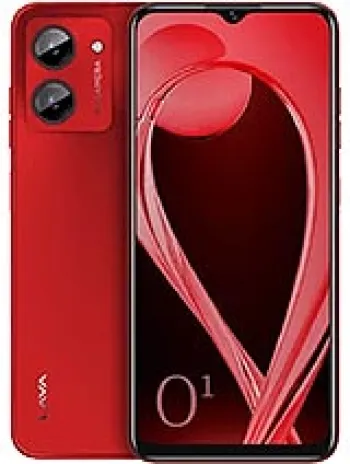
Introduction
The Lava Iris 460 was launched in August 2014 as a budget-friendly smartphone option for users who needed practical features at an affordable price. Over the years, while the device has been discontinued, it remains a point of interest for enthusiasts who appreciate gadgets that delivered essential smartphone experiences in their time. This article provides an in-depth examination of the Lava Iris 460, highlighting its design, features, specifications, and overall performance.
Design and Display
The Lava Iris 460 features a compact design that was typical of smartphones from that era. It was equipped with a 4.5 inches IPS LCD display, offering a resolution of 480 x 854 pixels. With an approximate pixel density of 218 ppi, the display delivered satisfactory visuals for everyday use such as browsing, texting, and light media consumption under good lighting conditions. The modest screen size and 16:9 aspect ratio meant that the device was easy to handle and operate with one hand.
Performance
Under the hood, the Lava Iris 460 was powered by a dual-core 1.3 GHz CPU paired with the Mali-400 GPU. Although this hardware setup was considered basic, it was adequate for handling the core tasks expected from smartphones of that time, such as calling, messaging, and accessing basic apps. The device came with 1GB of RAM which, while limited compared to today’s standards, was sufficient for running the Android 4.4 KitKat operating system and executing light multitasking operations.
Memory and Storage
The Lava Iris 460 offered 8GB of internal storage, which provided users with some space for apps and media. For those needing additional capacity, the device included a microSDHC card slot, allowing storage expansion to accommodate media files and applications. This expandable storage was a significant feature that provided flexibility for users who wanted to make the most of their devices.
Camera Features
The device was equipped with a 5 MP main camera accompanied by an LED flash, which supported functionalities like panorama and HDR, making it possible to capture more dynamic and detailed images under a variety of conditions. It could record video at 720p quality, which was decent for capturing memories in motion. In terms of front-facing optics, the Lava Iris 460 was fitted with a VGA camera, which was mainly useful for basic selfies and video calls.
Battery Life
The Lava Iris 460 featured a removable Li-Ion 1650 mAh battery. While modest in capacity, the device was optimized to offer up to 250 hours of standby time and up to 6 hours of talk time, which could vary with usage patterns. The convenience of a removable battery gave users the flexibility to carry a spare battery if needed, extending usage time when charging facilities were unavailable.
Networking and Connectivity
Equipped with dual SIM capacity, the Lava Iris 460 supported 2G and 3G bands, which were standard for mobile connectivity. It allowed for decent internet speeds with HSPA technology. Connectivity features included Wi-Fi 802.11 b/g/n for wireless internet access, Bluetooth 4.0 for connecting with other devices, GPS for location services, FM radio for offline entertainment, and microUSB 2.0 for charging and data transfer.
Software and User Experience
Operating on Android 4.4.2 KitKat, the Lava Iris 460 provided a user-friendly interface that enabled access to a range of apps from the Google Play Store. Although not the latest version of Android, KitKat brought several enhancements over its predecessors, such as improved performance and a cleaner design. Users could enjoy a simple and intuitive navigation experience, ideal for first-time smartphone users or those looking for a no-frills device.
Additional Features
The Lava Iris 460 included sensors such as an accelerometer and proximity sensor, which were leveraged to enhance user interaction with the device. These sensors enabled functionalities like screen auto-rotation and call handling adjustments, contributing to the convenience and ease of use.
Conclusion
The Lava Iris 460, while discontinued, represented a targeted solution for users seeking essential smartphone functionalities without the complexities or high costs associated with high-end devices. With its practical design, expandable storage, basic camera capabilities, and sufficient battery life, it catered well to its market segment at the time. Though it may not match contemporary devices on technical capabilities today, it remains a testament to the evolution of budget smartphones and the increasing accessibility of mobile technology across different user communities.
Key Features of Lava Iris 460
- IPS LCD Display: Offers vibrant colors with a 4.5-inch screen size.
- Dual SIM Capability: Allows the use of two SIM cards, ideal for separating work and personal contacts.
- Android 4.4.2 (KitKat): Comes with a user-friendly and reliable operating system.
- 8GB Internal Storage: Sufficient for storing apps and media, expandable via microSDHC.
- 5 MP Main Camera: With LED flash, panorama, and HDR features for versatile photography.
- Long Battery Life: Removable Li-Ion 1650 mAh battery providing up to 6 hours of talk time.
- Connectivity Options: Equipped with Wi-Fi, Bluetooth 4.0, GPS, and FM radio.
- Compact Design: Available in two colors – Black and Grey, offering a sleek appearance.
Disadvantages of Lava Iris 460
- Discontinued model, may lack support and updates.
- Low display resolution of 480 x 854 pixels.
- Limited internal storage of 8GB, with only 1GB RAM.
- Old Android version (4.4.2 KitKat), which may not support newer apps.
- Dual-core 1.3 GHz CPU may not handle heavy applications or multitasking efficiently.
- Basic VGA front camera, which provides low-quality selfies.
- No 4G connectivity, limited to GSM and HSPA technology.
- No NFC support, limiting modern connectivity options.
- Limited battery capacity (1650 mAh) may result in shorter usage times.
- Unknown dimensions and weight could be a concern for portability and ergonomics.

View Also
More Phones
All Rights Reserved +14266 Phones © Mobilawy 2025

























